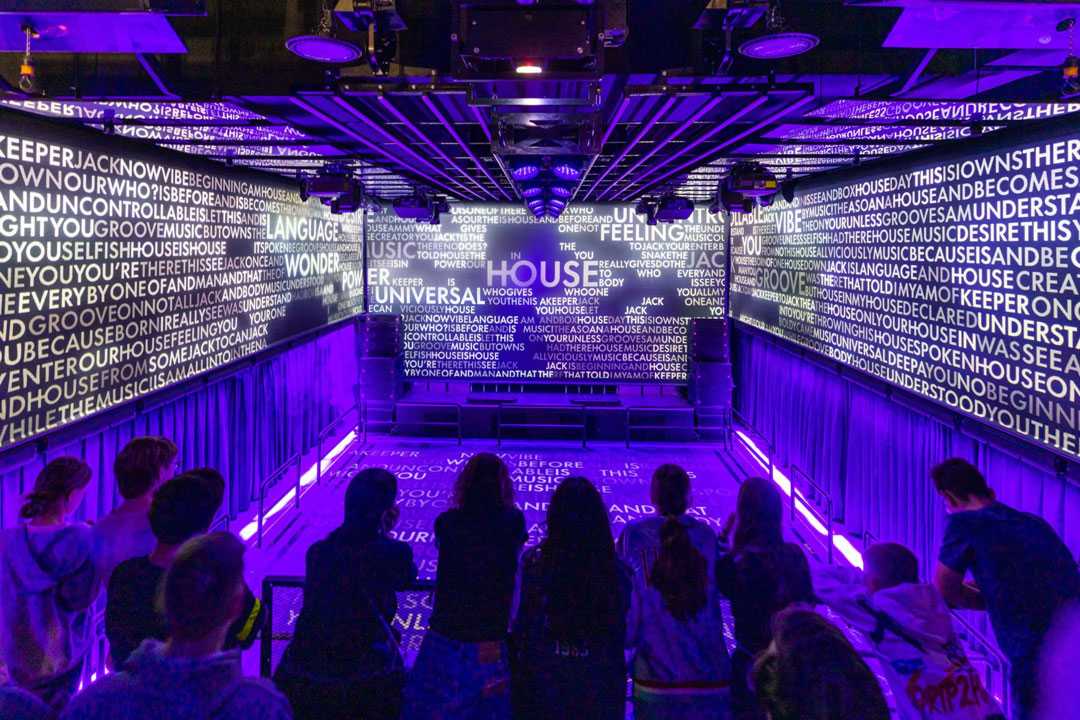Powersoft Movers drive Our House installation
- Details

Based in Amsterdam’s Rembrandt district, Our House has been a thriving nightclub and the beating heart of the electronic music scene since the 1980s. The venue has upheld its musical legacy by recently becoming a digital storytelling museum, promising a 75-minute journey into the music genre via interactive exhibits, shows and performances, telling the story of how electronic music - once a rebellious and secretive underground scene – has evolved.
“When we came here, about two years ago, the place was very analogue: There was a sound system, strobes, smoke machine and some LEDS - that was about it,” says Our House general manager, Jeroen Jansen. “We wanted to rebuild the club with installations that could tell the story of over 40 years of dance music by using mixed technology. In order to revamp the venue and bring it to a completely new level, we received a lot of support from within the industry, including Powersoft.”
The venue’s overhaul had to be carefully considered, as it’s home to a popular nightclub, Club Air, in the evening whilst sharing the same space with museum-goers by day. The power of the amps and Mover are somewhat harnessed for effect in the daytime and more aimed at visually connecting to the video content, whereas at night-time the lower frequencies are ramped up on the dancefloor to accentuate the music and bassline.
Jansen sought advice from Powersoft engineers to assess the number of required Mover to support the dancefloor structure they had in mind; the double layered flooring needed to support 100 people and 12 tonnes of weight.
They opted for 64 Mover, Powersoft’s compact linear transducer, all powered by four Quattrocanli 4804 DSP+D amplifiers. The versatile transducer can be attached to a large number of objects and structures including gaming chairs, entertainment venue seats, wall panels and, in this case, underneath the double layered dance floor.
“We came up with the idea of actively involving all technical elements that are associated with electronic music, like light, video, laser and special effects. We wanted movement from underneath people’s feet to form a completely immersive experience, created by a timecode content system,” states Jansen, who refers to the specifically designed content as “the connector of all the dots”, bringing all the tech together at musical pinpoints, like when the beat drops or the musical crescendo.”
The “double floor” construction consists of one hydraulic surface, which can slide up and down 20cm, and the secondary flooring on top. The latter has the 64 Mover attached, one to each floor panel, so it can be felt wherever the person is standing.
Jansen attributes his passion for electronic music as the driving force in creating this experiential museum, which plays homage to the likes of Daft Punk, Carl Cox and Diplo. “It was very important to us that we created a full VR experience, without glasses, at the climactic end of the visitors’ journey. That’s where the idea of a haptic experience came up: to tie in all the technology with movement, so that everything worked in harmony.”
System integrator Lagotronics worked in collaboration with Our House to develop the “free fall” hydraulic floor system, which not only vibrates but drops downwards. “We add a special element that nobody expects, so it's quite a shock to people when they are here; it creates a really unique experience,” adds Jansen.
















